Vimshamsha or the D20 by Shakti Mohan Singh
We use several divisional charts (16 according to BPHS), the navamsha or the D-9 being the most popular, although the most misunderstood also, but here I propose to write something about the D-20, i.e. the Vimshamsha. I think that I am right when I say that this is one of the most neglected ones out of the 16.
Incidentally, I have discussed briefly this divisional chart with an example in the 17th chapter (EXCITATION) of my book on Kaala Chakra Dasha System on pages 445 and 451.
Vimshamsha or the D-20
Verse 4 of chapter 7 of VPHS, Varga Vivekaadhyaaya (वर्ग विवेकाध्याय) reads as उपासनाया विज्ञानं साध्यं विंशति भागके. On a 20 point scale, Maharshi Parashar allotted 0.5 points or 2.5 % weightage to it.
Generally, the word upasana is used in the context of religious practices and is used for the act of devotion/worship etc. The D-20 is therefore considered useful in the evaluation of one’s devotion and success or otherwise in religious/spiritual pursuits. This is not considered useful in any worldly or material areas of our lives.
Now that is something I find difficult to accept.
So, let us first of all try to understand what the word upaasana stands for.
What is Upaasana?
Verse 4 of chapter 7 of VPHS, Varga Vivekaadhyaaya (वर्ग विवेकाध्याय) reads as उपासनाया विज्ञानं साध्यं विंशति भागके. On a 20 point scale, Maharshi Parashar allotted 0.5 points or 2.5 % weightage to it.
Generally, the word upasana is used in the context of religious practices and is used for the act of devotion/worship etc. The D-20 is therefore considered useful in the evaluation of one’s devotion and success or otherwise in religious/spiritual pursuits. This is not considered useful in any worldly or material areas of our lives.
Now that is something I find difficult to accept.
So, let us first of all try to understand what the word upaasana stands for
- the practice of archery
- being in attendance to, or caring for, someone
- serving or looking after someone
- appeasement of some or the other deity (or authority)
Therefore in my opinion, the native’s dedication for and of course his / her success in his / her mission or any task he / she undertakes and his / her focus on and the chances of his / her hitting the target should be read from the D-20.
So, the idea that it is about the spiritual / religious pursuits only, is incorrect. In my experience the D20 covers the native’s dedication to anything and ability to plan out a strategy for achieving his target/s and also the efforts and success in executing it; and that is why, its evaluation is useful in matters related to such careers / tasks where the success depends on the dedication of the native.
The Table – I below shows the distribution of D-20 over the 12 zodiacal signs:

Rules of Interpretation of the Divisional charts
- By and large, the rules of interpretation applicable in case of the interpretations of the horoscopes in general, apply here also the only difference being that in place of the D-1 we use here the divisional charts relevant to the matter under consideration.
- The native experiences good results in that sector of life which is denoted by the sub-divisional chart, e.g. D-9 for the conjugal happiness, D-10 for the major achievements in life, D-7 for happiness related to progeny etc. etc., provided the ascendant in the sub-division under consideration, i.e. which is being examined or the sign in the relevant house (5th in case of D-7, 7th in case of D-9, 10th in case of D-10 and so on and so forth) reckoned from it is in dignity on account of
- being occupied by an exalted planet or
- being occupied or aspected by its lord or benefics only or
- because either the sign or the 7th from it and / or their lords have only benefics in both, the 2nd and the 12th, the 5th and the 9th, the 8th and the 12th or the 3rd and the 11th from it or
- because the lord of the sign is aspected by benefics only or
- because its lord occupies its alternate sign or its exaltation sign or
- because the sign occupied by the lord is the same in the divisional chart as well as in the D-1,
- The converse is also true in case of (a) to (c) above.
- The sector of life relevant to the sub-division becomes also activated if the sub-division under consideration forms some kind of relationship with the relevant place also, e.g. 7th place in case of D-9, 10th in case of D-10, 5th in case of D-7 etc. The resulting events in that sector of life are auspicious or adverse according to whether the signs and/or their lords are under benefic influences or malefic influences.
- The formation of raja-yogas, dhana-yogas, and any other benefic yogas in a particular divisional chart promotes the matters relevant to the sub-division. Adverse yogas cause damage to these.
- Formation of the relationship between the sign in the ascendant and the one in the nth sign from it and also any good or bad yogas enhances the impact of the results. The converse is also true.
N.B. By ascendant here we mean the ascendant of the foundation chart and not the ascendant of the divisional chart.
Explanation: My experience is that the ascendant and the house positions of the divisional charts are not important. It is only the rashi position that is operative. Therefore, the houses in the divisional chart also should be reckoned from the ascendant of the D-1 only.
Illustration I
Male (identical twins) 04 10 1993 / 06 15 00 hrs / 76 E 36, 27 N 34
The Foundation Chart
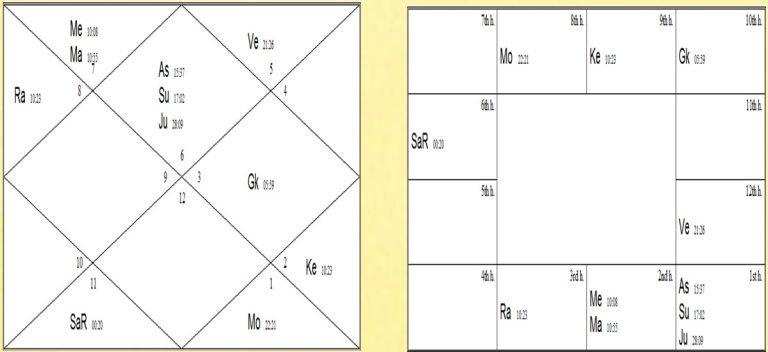
The very first glance over this chart shows that although the ascendant is occupied by a benefic – the Jupiter, it is also occupied by a malefic – the Sun and aspected by another – the Ketu. The lord of the ascendant – the Mercury – which incidentally is also the 10th lord – is in the arc corresponding to the vish ghatis and is conjunct one malefic – the Mars and has only malefics in the 5th (the Saturn) and the 9th (Gulika) houses from it.
The 10th is occupied by the malefic Gulika. Thus the ascendant and the 10th, both are heavily afflicted.
Besides, since in this chart the 12th and the 2nd houses from the Moon have no planets, the chart has the kemadrum yoga (Phala-Deepika , ch. 06 verse 05 and 07, विधोस्तु सुनफा अनफा धुरुधरा ……तु केमद्रुम) which makes the native somewhat unlucky, confused and indecisive. Generally, such natives are unsuccessful in their lives. Natives with this configuration in the chart are very much prone to ‘cognitive interferences’ and when left alone to make decisions without a mentor to help them, they are likely to choose the wrong options. Such natives, therefore, are generally unsuccessful at the number one position in any organization or operation. However, according to some scholars, the presence of two planets – the Mercury and the Mars – in the 7th from the Moon in this chart cancels the kemadruma but, most respectfully, I will like to submit that in my experience, the kemadruma remains effective to a great extent even after such cancellation.
Incidentally, the kemadruma has been defined differently in different classical text books but the most popular and widely accepted definition is the one given in Phala Depika. I am following the same.
Also, according to Phala Deepika, ch. 6 verse 14 जीवान्त्याष्टारि संस्थे शशिनि तु शकटः …… इत्यादि., if the Moon and the Jupiter are juxtaposed in 6/8 or 2/12 position from each other, the configuration goes under the name of Shakat-yoga. Dr. B. V. Raman says that this is a yoga mentioned in the Shukranadi also and the exact wordings regarding its results are “Shakat-yoga jaatasya yoga bhangam pade-pade” meaning that such a native has his fortune obstructed every now and then. In this case, the Moon is in the sign Aries and the Jupiter in the sign Virgo and therefore the two are juxtaposed in 6/8 position forming this configuration.
However, there is only one bright aspect in this chart that it has only benefics in the 8th and the 12th from the ascendant (and of course the 4th lord Jupiter) and the 4th house – (the mother, the vehicles, the assets like property etc. and the formal / academic education etc.), has only benefics in the 5th and the 9th from it (See Jaimini Sutram, 2/1/32 पापमध्ये पापकोणे रिपुरोगयोः पापे वा meaning that a zodiacal sign becomes a maaraka sign if it (or its 7th to a certain extent) has only malefics in the 2-12, 5-9 and the 8-12 from it, which implies that benefics in these places make the sign productive of highly benefic results).
There is no raja yoga or dhan yoga worth mentioning in this chart and one cannot expect the natives to make any substantial achievement in their lives / careers except their college education (the 4th house); but the fact is that after completing successfully the B.Tech in Gujarat, India in the year 2015 the natives did their Masters’ from Melbourne, Australia in 2019 and after that, are presently employed on highly remunerative positions in Australia.
Both have now been married to similarly well-qualified girls who are also employed similarly in lucrative positions in Australia.
Could we predict something like this from an analysis of the Foundation chart?
Now let us have a look at the D-20 chart:

Although the ascendant (the sign Virgo and not the Gemini) is unoccupied and aspected by a malefic – the Saturn, its lord – the Mercury – is dignified being in the vargottam vimshaamsha and aspected by a benefic – the Jupiter. The 10th house (the Gemini) has only benefics in the 5th and the 9th from it and the conjunction of the 4th (the Sagittarius) and the 9th (the Taurus) lords (the Jupiter and the Venus) forms a rajayoga, to wit त्रिकोनाधिपयोर्मध्ये संबंधो येन केनचित् बलिनः केंद्रनाथस्य भवेद्यदि सुयोगकृत् (लघु पाराशरी योगाध्याय 4). The D-20, therefore shows clearly the potential for a good career.
Another thing worth noting here is that the all the progress made by the natives so far took place in the dashas of the Moon (22 03 2006 to 22 03 2016) and the Mars (22 03 2016 to 22 03 2023). The Mars is dignified in the D-20 being in own sign and the Moon, although conjunct the Rahu-Ketu, but has only benefics in the 5th and the 9th from it.
In contrast see the next case:
Illustration II
Although, the chart cannot be said to be an extraordinarily strong one but it is also not a weak one. The ascendant is occupied by a benefic – the Moon which is aspected by two benefics – the – Jupiter and the Venus. There is no malefic aspect whatsoever.
The ascendant lord, although combust and in the 8th house, is uchcha sambandhi.
At least four rajayogas are formed in this chart , to wit
- A debilitated planet – the Jupiter is aspecting the ascendant (The VPHS rajayogadhyaya verse 28 says दुःस्थानेशो∙पि नीचस्थो यदि लग्नं प्रपश्यति तदा∙पि राजयोगः स्यादिति ज्ञेयं द्विजोत्तमः meaning that even if the ruler of an evil house – the 6th, 8th or the 12th – being debilitated, aspects the ascendant, it constitutes a rajyoga. Here, the Jupiter is the ruler of a much better house – the 7th – an angle – and is debilitated and aspects the ascendant forming this configuration),
Male, 27 04 1961, 17 30 00 hrs., 75 E 49 / 26 N 55.
The Foundation Chart

- The lord of an angle – the Jupiter is conjunct the lord of a trine – the Saturn (According to the Laguparashari (one of the classical text books of Vedic astrology) chapter 2 verse 4 त्रिकोणाधिपयोर्मध्ये सम्बन्धो येन केनचित् बलिनः केन्द्रनाथस्य भवेद्यदि सुयोगकृत् meaning that if there is some relation between any of the trine (the 1st, the 5th and the 9th houses) lords with one of the lords of an angle (the 1st, the 4th, the 7th and the 10th houses) it constitutes a raja-yoga.),
- A neechabhanga rajayoga is formed because the Jupiter is debilitated and the lord of its debilitation sign is in an angle from it (Phala Deepika, the verses 28/29 in the chapter on Rajayogas say that नीचे तिष्ठति यस्तदाश्रित गृहाधीशो विलग्नाद्यदा चंद्राद्वा यदि नीचगस्य विहगस्योच्चर्क्षनाथो∙थवा केंद्रेतिष्ठति चेत्प्रपूर्णविभवः स्यात्चक्रवर्ती नृपो धर्मिष्ठो∙न्यमहीशवन्दितपदस्तेजोयशोभाग्यवान् meaning that if some planet is debilitated in a chart and the lord of its exaltation sign occupies an angle from the debilitated planet or the ascendant the native is a chakravarti ruler, i.e. he occupies a position of authority over several other rulers, is adept in rules and procedure and enjoys a good reputation.),
- Another neechbhanga rajayoga is formed because the Mars is debilitated and the lord of its debilitation sign, the Moon is in an angle from the ascendant
Coming to the D-20 we see that:

Although the conjunction of the 9th and the 10th lords in Virgo – the sign in the ascendant (D-1) – constitutes a rajayoga but the sign of the ascendant (D-1) and its lord – the Mercury which is in its exaltation sign, are both neecha sambandhi and have only malefics in the 5th and the 9th from them rendering the rajayoga infructuous.
The 4th lord – the Jupiter, although in its moolatrikona sign Sagittarius in the D-20, is aspected by a malefic only – the Mars and the 7th from both, the 4th and the 4th lord, are in a paapakartari. There is no benefic aspect whatsoever.
The exchange of the lords between the 5th and the 12th houses (the Capricorn and the Leo) constitutes a dainya yoga (Phaladeepika ch. 6 verse 32 / 33 says त्रिन्शद्दैन्यमुदीरितं व्ययरिपुच्छिद्रादिनाथो… इत्यादि meaning that the exchange between the lords of either the 6th, 8th and the 12th with other houses – except the 3rd – constitutes 30 dainya yogas) which are evil configurations bringing ill luck to the native).
These configurations have entirely spoiled the D-20 and clearly show that the native has no or very poor dedication for his career.
The native was born in and lived like a prince in a palatial house located in a posh colony of a Capital city owned by his father but did not bother to complete his education or otherwise equip himself for some career of his own. Even as a school student he was having the facility of a motorcycle, which was not as commonplace a thing in those days as it is now yet he did not pass even Higher Secondary examination. He tried his hand at contractor ship and failed miserably. He joined at least half a dozen jobs but continued with none.
The Jupiter dasha started on 18 11 1998 and after a prolonged spell of sickness (at the fag end of the Rahu dasha) the father of the native expired and the native, along with his elder brother inherited his father’s property. There was some dispute between the two successors and the property was sold out for a throwaway price. The native shifted to a smaller city and purchased several cheap plots, which he sold out one after another within a couple of years and became a pauper in the Jupiter’s dasha itself.
Now the native does not even try for a job or join one if and when offered. He also has become a pest and a nuisance and leads the life of a total parasite upon his wife who is a beautician and elks out a meager livelihood by working in beauty parlors. He also borrowed money from his relatives and is now unable to pay back.




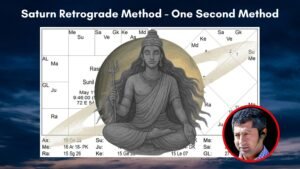
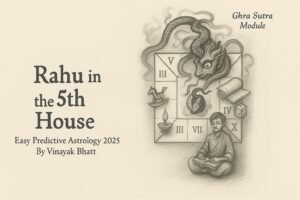

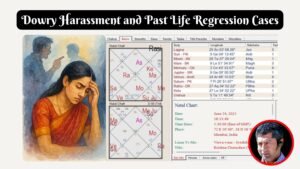




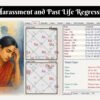
Leave a reply
You must be logged in to post a comment.